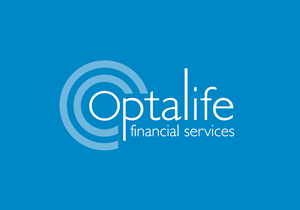Money Magazine
Deciding between moving into a house, a townhouse or an apartment requires careful consideration.
1. House. This is the traditional standalone dwelling where you are buying the land on an individual title. It’s still the most popular property type for owner-occupiers in Australia and allows the most flexibility and privacy. However, it has its drawbacks, including higher price tags, more space to clean and maintain, higher utility bills, and sole responsibility for maintenance and repairs.
Another big attraction is that houses have some outdoor space, enabling owners to have gardens, outdoor living areas and sometimes swimming pools. It’s also been accepted wisdom that house prices grow faster than townhouses or apartments, mainly due to their land value. But there are some signs this may be changing. Research by Nuestar and Hotspotting showed that in the 12 months to May 2025, 62.9% of apartment markets across the country recorded an equal or higher median price growth than houses.
2. Townhouse. These are multi-level buildings – usually two storeys – designed to look like a traditional house but on a strata title, meaning you own the dwelling but share the land with others. Townhouses can be a good option for downsizers, given they often have a similar amount of space as a house but have substantially fewer maintenance requirements. An added attraction is that they usually come with outdoor space, which can range from a courtyard to a decent backyard.
Depending on the type of townhouse, they will usually have an owners’ corporation (or body corporate) and you will face similar restrictions to an apartment. These include bylaws that stipulate things such as acceptable noise levels and require you to obtain strata committee approval for any renovations. You will also need to pay strata levies for shared amenities, generally the more amenities – think pools and outside gardens – the higher the levies.
If you are considering buying a townhouse or an apartment, make sure you or your legal representative obtain a strata report – also known as a strata inspection report – which provides a comprehensive overview of a strata property’s condition, finances, and management.
It’s a crucial tool for anyone buying or investing in an apartment, townhouse or villa within a strata scheme. You want to know about the state of the sinking fund (money put aside to deal with regular maintenance) and proposed major expenditure, which should be outlined in the 10- to 15-year maintenance plan, detailing what the levy contributions should be over that period. You also need to know about any known disharmony and disputes within the strata scheme.
Townhouses are usually cheaper than houses but more expensive than apartments. Buying a townhouse closer to the city or beach or in a competitive real estate market is usually more affordable than buying a house. Downsides include less privacy, shared walls and other amenities, and a particular worry for many older downsizers is most townhouses have internal stairs because they are normally two-storey or higher. And again, townhouse prices traditionally do not grow as fast as those of houses in the same area.
3. Apartments. Apartment are self-contained units that are part of a bigger complex and can be a popular choice for downsizers, given their smaller size and lower maintenance needs. When you own a unit, you are on a strata title, meaning the apartment belongs to you but ownership of the common property is shared with all the other owners.
It also means you will belong to an owners’ corporation and will have to comply with certain bylaws. You’ll need to pay owners’ corporation fees, to cover the repair and maintenance of the common areas. The exact amount you pay will depend on the size of the lot you own, as well as the size of the building complex, its age and amenities.
As with townhouses, it’s important to get a comprehensive strata report before you buy. You must be aware of looming maintenance issues that may require special levies or extra payments to pay for specific work. These are becoming more prevalent in apartment complexes and can sometimes be high sums of $100,000 per unit and more.
Lower purchase prices, convenient locations, less maintenance and lower utility bills are the main advantages. Some apartment complexes also come with bells and whistles such as pools, communal gardens, rooftop decks and concierge services but, of course, these amenities all mean higher owners’ corporation fees.
Downsides of apartment living include less space and generally limited outdoor areas and car parks. There is also less privacy because of shared walls, common areas and lifts.













